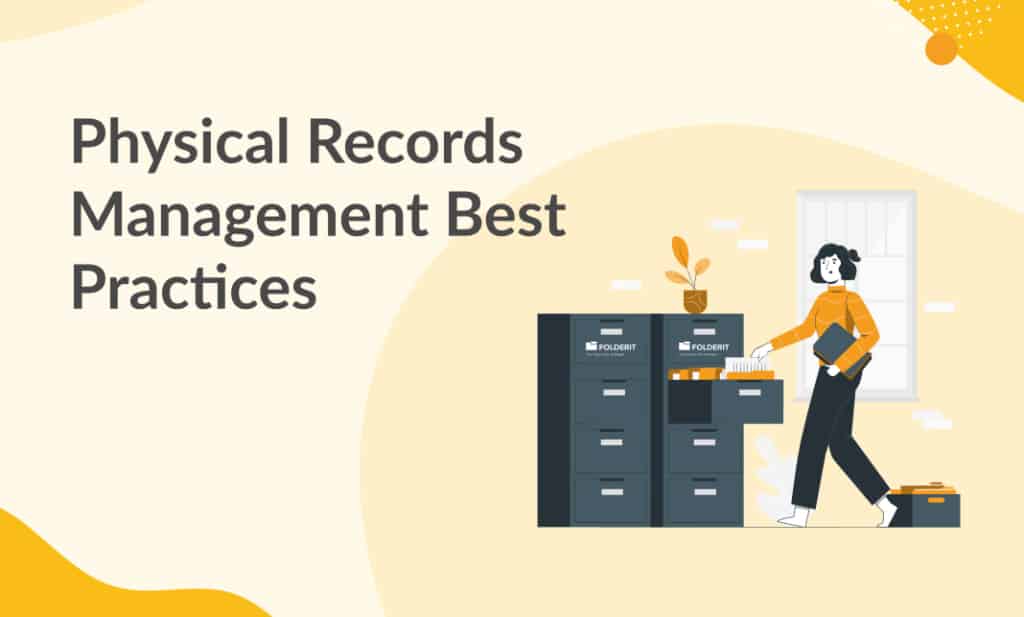As the world becomes increasingly digital, it’s easy to forget about the importance of physical records management. Despite the advancements in technology, physical records are still widely used in many industries and organizations. From legal documents to employee records, these files contain valuable information that needs to be properly stored and managed.
Effective physical records management is critical for reducing clutter, ensuring regulatory compliance, and maximizing efficiency. In this article, we will explore the best practices for physical records management, including tips for organizing, storing, and disposing of physical records. Whether you are a small business or a large corporation, these best practices will help you stay organized and manage your physical records with confidence.
Physical Records Management
Physical records are hard-copy records containing personal, business, or public information. Many businesses continue to rely on physical records to meet their commercial and administrative purposes, as well as to comply with legal obligations. Many issues exist in physical records management, such as managing paper records, a lack of visibility, manual methods to keep data compliant, and lost or missing paper documents. You can avoid these problems by implementing a streamlined records management system.
A Records Management System (RMS), often known as an electronic records management system, is a system for managing records for an organization throughout the life cycle of the record.
ISO 15489 provides companies with the guidelines they need to develop a strong and compliant records management system. Government organizations and enterprises must have a document storage strategy in place to comply with records retention rules. Here are the best practices for compliant physical records management that you can implement.
Best Practices for Physical Record Management
Record Identification and Documentation
Identifying and documenting records that need to be archived is the first stage in the records management process. Records should be included in general if they are made as proof of an event or by organizations to document their activities, decisions, or operations.
Finding the Best File Management Solution
The process of deciding how files will be organized, classified, accessed, and stored is known as file management. Having the correct records management system, whether in paper or electronic format, helps alleviate the irritation felt by records managers when they need to identify, manage, locate, or circulate records.
Convert your Physical Records into Digital Data
Scan and convert your physical records into electronic files to improve the efficiency of operational activities and to make all of your data easily accessible. This allows for significant cost savings in terms of physical storage while also lowering the risk of data loss or information destruction.
Develop a Records Management Strategy
Controlling the accumulation of documents and records is an important aspect of the filing system. Every record has its own shelf life. All retention and disposal schedules must be accurately applied to each type of record created in each department. The end of the fiscal or calendar year is used as a disposal or cutoff date by many governmental entities and municipalities. The end of the academic year may be used by universities and colleges.
Regular Policy and Strategy Reviews
It is critical to examine compliance rules and regulations on a regular basis, both internally and internationally, in accordance with industry standards and legislation.
Why are Best Practices for Record Management necessary?
Today, we employ a variety of media, including paper, electronic files, and emails, making record management more difficult. The primary reason that businesses want best practices for record keeping is to ensure that they remain legally compliant. Another motive is to avoid data loss.
How does Folderit provide the key functionalities required to set up a Record Management System?
Streamlining Electronic and Physical Records Management
Folderit enables you to manage both electronic and physical information in one location. This entails centralizing electronic files and generating physical document records, as well as implementing retention schedules, access controls, and disposition approvals for both digital and physical data.
Eliminate Manual Processes
Documents can be set to retain automatically based on their creation date, document profile, or the ‘date’ index file connected with the documents.
Streamline the Flow of Physical Records
You can manage and track the movement of physical records both within and outside of your business. When records are due for check-in, automatic email reminders can be sent.
Execute Legal Holds and e-Discovery Procedures
Folderit enables you to place records on hold during an audit, lawsuit, or government investigation.
Reduce the Likelihood of Non-compliance
You can easily build batches of records for regular disposition. It keeps track of all record actions and guarantees that records are disposed of properly.
All in all, Folderit provides a robust and comprehensive Records Management Solution that you can use to digitize your physical records, as well as to keep tabs on documents using automation tools.



